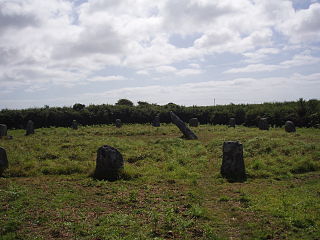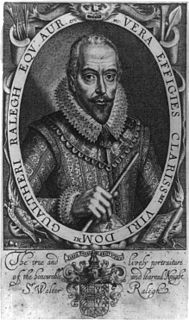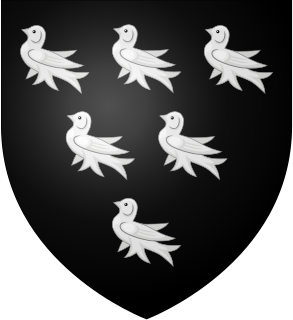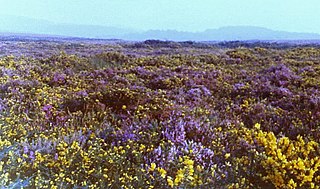
The Battle of Sampford Courtenay was one of the chief military engagements in the Western Rebellion of 1549.

The Battle of Sampford Courtenay was one of the chief military engagements in the Western Rebellion of 1549.
By mid August 1549, Humphrey Arundell, the leader of the rebel troops, regrouped his forces at Sampford Courtenay, Devon, when he received a promise that 1,000 men from Winchester would join his force. This would be the site of the fifth and final battle of the Prayer Book Rebellion. Unknown to Arundell, there was an informer in his camp – his own secretary John Kessell, who had been supplying intelligence of Arundell’s movements and plans to President of the Council of the West, John Russell, 1st Earl of Bedford, from the start. [1]

Russell was under the impression that the rebels from Devon and Cornwall had been defeated already and the news interrupted his plans to send 1,000 men into the South West by ship to cut off his enemy’s retreat. His own forces had been further strengthened by the arrival of a force under Provost Marshal Sir Anthony Kingston. He now had an army of more than 8,000, vastly outnumbering what remained of his opposition. [1]
Russell moved his forces out on 16 August, camping overnight at Crediton. On the next morning, scouts from both sides bumped into each other, resulting in a skirmish and the capture of a Cornish captain named Maunder. [1]
With the 1,000 men from Winchester failing to materialise, the main force of the rebel army had dug in on high ground just outside Sampford Courtenay, while a detachment led by Humphrey Arundell waited in the village itself. They knew that this was to be their last stand and the rebels were on their own against Russell’s army, which outnumbered them greatly. [1]
Lord Russell opted for a three-pronged approach. Heavy divisions led by Lord Grey and Sir William Herbert stormed the rebel encampment, while Russell himself would follow behind. This was not as simple as Russell had envisaged: the rebel camp being more strongly manned than he had thought. A vicious gun battle, lasting roughly an hour, gave time for Russell’s two other divisions to make their move. One consisted of the Italian arquebusiers under Spinola, the other being the German Landsknechte. With almost the entire government force ranged against them, the rebels withdrew into the village where they came under heavy bombardment. [1]
Once again, the battle might have been won for the Cornish and West Devonians had they possessed any cavalry. [1]
Contemporary Exeter historian John Hooker wrote that the rebel army would not surrender until most of their number had been slain or captured. Lord John Russell was quoted that his army had killed between five and six hundred enemy and his pursuit of the rebel retreat killed a further seven hundred. [2]
The Devon men made a vain attempt to find safety in Somerset but, one by one, they were caught and mostly hanged, drawn and quartered by troops led by Sir Peter Carew and Sir Hugh Paulet. The Cornishmen headed for home but tried one final time to stand against Russell at Okehampton. Russell planned another attack but in the morning, he received news from the informer, Kessell, that the Cornish forces had been decimated and that the remaining Cornishmen were now back across the River Tamar. [1]

Kett's Rebellion was a revolt in Norfolk, England during the reign of Edward VI, largely in response to the enclosure of land. It began at Wymondham on 8 July 1549 with a group of rebels destroying fences that had been put up by wealthy landowners. One of their targets was yeoman Robert Kett who, instead of resisting the rebels, agreed to their demands and offered to lead them. Kett and his forces, joined by recruits from Norwich and the surrounding countryside and numbering some 16,000, set up camp on Mousehold Heath to the north-east of the city on 12 July. The rebels stormed Norwich on 29 July and took the city. On 1 August the rebels defeated a Royal Army led by the Marquess of Northampton who had been sent by the government to suppress the uprising. Kett's rebellion ended on 27 August when the rebels were defeated by an army under the leadership of the Earl of Warwick at the Battle of Dussindale. Kett was captured, held in the Tower of London, tried for treason, and hanged from the walls of Norwich Castle on 7 December 1549.
The Prayer Book Rebellion or Western Rising was a popular revolt in Cornwall and Devon in 1549. In that year, the Book of Common Prayer, presenting the theology of the English Reformation, was introduced. The change was widely unpopular, particularly in areas where firm Catholic religious loyalty still existed, such as Lancashire. Along with poor economic conditions, the enforcement of the English language literature led to an explosion of anger in Cornwall and Devon, initiating an uprising. In response, Edward Seymour, 1st Duke of Somerset sent Lord John Russell to suppress the revolt.

Michael Joseph, better known as Michael An Gof, was one of the leaders of the Cornish Rebellion of 1497, along with Thomas Flamank.

Thomas Flamank was a lawyer and former MP from Cornwall, who together with Michael An Gof led the Cornish Rebellion of 1497, a protest against taxes imposed by Henry VII of England.

The Cornish rebellion of 1497, also known as the "First Cornish rebellion of 1497", was a popular uprising in the Kingdom of England, which began in Cornwall and culminated with the Battle of Deptford Bridge near London on 17 June 1497.

The history of Cornwall goes back to the Paleolithic, but in this period Cornwall only had sporadic visits by groups of humans. Continuous occupation started around 10,000 years ago after the end of the last ice age. When recorded history started in the first century BCE, the spoken language was Common Brittonic, and that would develop into Southwestern Brittonic and then the Cornish language. Cornwall was part of the territory of the tribe of the Dumnonii that included modern-day Devon and parts of Somerset. After a period of Roman rule, Cornwall reverted to rule by independent Romano-British leaders and continued to have a close relationship with Brittany and Wales as well as southern Ireland, which neighboured across the Celtic Sea. After the collapse of Dumnonia, the remaining territory of Cornwall came into conflict with neighbouring Wessex.

Devon is a county in south west England, bordering Cornwall to the west with Dorset and Somerset to the east. There is evidence of occupation in the county from Stone Age times onward. Its recorded history starts in the Roman period when it was a civitas. It was then a separate kingdom for a number of centuries until it was incorporated into early England. It has remained a largely agriculture based region ever since though tourism is now very important.

The Lord Warden of the Stannaries used to exercise judicial and military functions in Cornwall, in the United Kingdom, and is still the official who, upon the commission of the monarch or Duke of Cornwall for the time being, has the function of calling a stannary parliament of tinners. The last such parliament sat in 1753.

Trerice is an historic manor in the parish of Newlyn East, near Newquay, Cornwall, United Kingdom. The surviving Tudor manor house known as Trerice House is located at Kestle Mill, three miles east of Newquay. The house with its surrounding garden has been owned by the National Trust since 1953 and is open to the public. The house is a Grade I listed building. The two stone lions on the front lawn are separately listed, Grade II. The garden features an orchard with old varieties of fruit trees.
Sir Anthony Kingston was an English royal official, holder of various positions under several Tudor monarchs.

Clyst St Mary is a small village and civil parish 3 miles (4.8 km) east of Exeter on the main roads to Exmouth and Sidmouth in East Devon. The name comes from the Celtic word clyst meaning 'clear stream'. The village is a major part of the electoral ward of Clyst Valley. At the 2011 Census this ward population was 2,326.

Humphrey Arundell of Helland in Cornwall, was the leader of Cornish forces in the Prayer Book Rebellion early in the reign of King Edward VI. He was executed at Tyburn, London after the rebellion had been defeated.

Woodbury Common in East Devon, England is an area of common land that is predominantly heathland adjacent to the village of Woodbury. It is bordered to the south by the edge of the towns of Exmouth and Budleigh Salterton, the hamlet of Yettington to the east, and the A3052 to the north. It is part of the East Devon Area of Outstanding Natural Beauty, and is a Site of Special Scientific Interest.
The Jacobite uprising in Cornwall of 1715 was the last uprising against the British Crown to take place in the county of Cornwall.

The Battle of Sourton Down was a successful Parliamentarian ambush at Sourton Down, in South West England, on 25 April 1643, during the First English Civil War. After a failed attack on Royalist-held Launceston, the Parliamentarians fell back on their base at Okehampton, pursued by a Royalist army under Sir Ralph Hopton, who marched overnight, planning to attack the town at dawn.

Cornwall played a significant role in the English Civil War, being a Royalist enclave in the generally Parliamentarian south-west.

The New Cornish Tertia were four Royalist regiments of infantry raised in Cornwall and Devon by Sir Richard Grenville, 1st Baronet in 1644, during the English Civil War. As the maps aside show, Cornwall and Wales were staunch Royalist strongholds whilst South East England was held by Parliament, and the remainder of England was in dispute.

Today Clyst Heath is a suburb to the south east of the city of Exeter, Devon, England. An area of relatively high ground to the west of the River Clyst, it remained heathland until the early nineteenth century when it was cultivated for the first time.

Sir Hugh Paulet of Hinton St. George in Somerset, was an English military commander and Governor of Jersey.

John Calwoodleigh of the City of Exeter in Devon, was twice Mayor of Exeter, in 1502 and 1508. He was a Churchwarden of St Petrock's Church, Exeter.